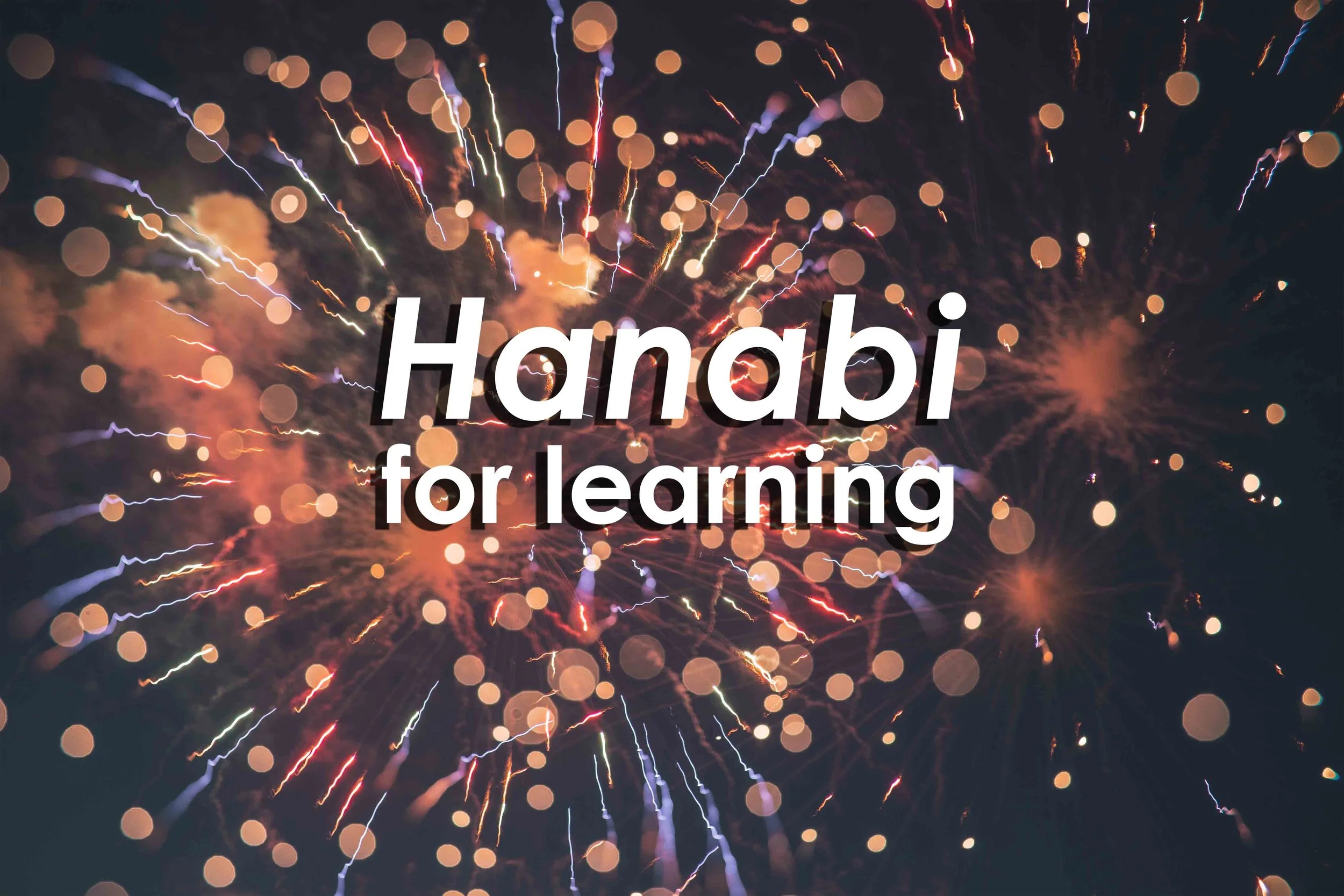Baby you’re a Firework
Baby you’re a Firework
I’m no stranger to cooperative gaming or applying it toward student development. During my last attempt I threw a staff of my Orientation Leaders into a world overrun with viruses. They put in a valiant effort; but were unable to stop a global PANDEMIC.
This time I attempted something simpler…. Like trying to set off a fireworks display.
That’s when I chose Hanabai to become the next games-based learning application for my summer staff training.
Hanabai is a cooperative card game designed by Antoine Bauza. Players are dealt a series of cards face down. These cards are never revealed to their holders. Instead they can only provide information to teammates around the table. Each card comes in one of six colors: green, blue, red, yellow, white, and rainbow. In addition each card has a rank: 1-5.
The object of the game is to play your cards in the right order. Each player takes a turn making a choice: playing a card on the table, discarding a card, or giving a piece of information to a teammate
Did I mention that these cards all have some rad firework art on them? That’s because everyone is playing the role of fireworks masters who are cooperatively putting together a display for a crowd.
Successful players will know when to give information to a teammate; when to play a card; and when to discard one. We played by shuffling the deck once and attempting to complete our display without dealing them out again.
So why is this important? Well, Hanabai is most importantly a game about information: how much your teammates have versus how much you have. There’s always a lopsided balance between the two. Sometimes you have the only card that can be played – but your teammates may not be able to tell you.
This shortage of information relates to my PRIME staff – a group I created back in 2013 whose sole purpose is to plan, lead, and evaluate student activities on our campus. All of their work is information heavy: where they are going, what they are doing, and who they need to meet up with. Sometimes that information gets lost in translation. That’s something I intended a game of Hanabi to fix.
I started off our staff of six with the basic layout of Hanabi as well as the major rules. I dealt a hand to everyone and they slowly raised them up to their noses: carefully preventing them from seeing what they had. They started their first game the same way I started mine: giving out information to teammates. Hanabi’s rules specifically limit giving information to only ONE teammate and only about a color or a number.
For example you can only tell the person next to you “these two cards are green” or “this is the only 1 card in your hand.” It has to be true for the entire person’s hand. You can’t just single out one of three red cards they are holding and tell them about it.
Since giving hints to teammates is one of the most critical aspects of the game it is also mercilessly limited. There are eight “clock tokens” that represent the number of hints that the team can give out. Once all of those are used the only moves that someone can make is to play a card (hoping that it adds to the display) or discard a card (hoping that you won’t need it later). Thankfully, discarding a card means that you earn a clock token back – but doesn’t save you from losing a potentially critical card.
My job during our first round was to make sure that everyone abided by the rules. When they couldn’t complete the display in the first go they opted to try again. I was less intrusive this time and let them figure out their own strategy. At least one player suggested “layering information” (i.e. giving one person a color hint while the next person gave a number hint). Through this process the team was able to narrow down what cards they had faster and more effectively.
After a second losing round, they opted for a third round and a fourth round. That’s when I just sat back and watched them give information to one another and play cards for their display. It was frustrating watching someone drop the only existing Green 3 left to prevent them from successfully finishing the fireworks extravaganza – but I knew that it was all part of the learning process.
Afterwards I asked them about listening to each other, providing information, and most importantly thinking about turns in advance. They provided great feedback like the importance of “listening skills” and the need to think of “…someone other than themselves.”
I connected it to their jobs as PRIMES where they should take and incorporate constructive feedback; provide useful information to teammates; and think “ten turns ahead” when it comes to contingency planning.
At the end of the night we didn’t successfully complete a single fireworks display.
But Hanabi is not about winning. It’s about how you play the game.
This article covered games-based learning with the table top game Hanabi. To learn more about using gamification for learning, check out the free course on Gamification Explained.
Dr. Dave Eng, EdD
Managing Partner
@davengdesign
www.universityxp.com
Cite this Article
Eng, D. (2015, September 11). Hanabi for Learning. Retrieved MONTH DATE, YEAR, from https://www.universityxp.com/blog/2015/9/11/baby-youre-a-firework
Internal Ref: UXP1K95G2XX7

